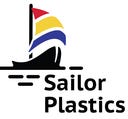How Empty Plastic Bottles Come to Rule the Liquor World
We simply can’t underpay the role of plastic in our lives no matter how hard we try. From food containers, liquor bottles to the interior of our cars, this tasteful dependency has made a great impact on the popularity and usage of plastic.
Bottled water and mini liquor bottles are a strange yet convenient concept. However, seeing the filled and empty plastic bottles pushed to the shelf with every product it sells, you as a user couldn’t help but wonder: How did empty plastic bottles come to rule the liquor world?
The Increase in Sales of Wholesale Mini Liquor Bottles
When it comes to addressing the safety of food, beverages, medical, personal care, and pharmaceutical products, PET is recognized by health authorities around the world. There are many reasons to why buying mini liquor bottles in wholesale is a ‘Good’ idea.
Here is why: PET is considered the cleanest and the greenest type of plastic among the others easily available in the form of plastic bottles and containers. And when it comes to companies today, they know that packaging is what protects the product and attracts customers in ways you could never imagine.
The reality is that PET is a packaging material that has dramatically contributed to the sales of bottled water and beverages by giving access to safe drinking and packaging for millions of people buying for practicality and convenience.
What’s more, it is a great resource with multiple benefits, that is, safe, lightweight, shatterproof, transparent, available in varying sizes and shapes, and 100% recyclable. When it comes to additional packaging, brands can simply save a lot on the transportation costs. It offers great durability and flexibility, ultimately requiring less protection as opposed to transporting glass bottles.
100% Recyclable Food-grade Plastic
When it comes to PET bottles, you can see the symbol on the bottom or the label of the bottles that tells about the recyclability, which plastic it is and where to place it for recycling. PET is the only plastic that is suitable for direct food contact, does not react with chemicals in liquor, and beverages, and is perfect for a closed-loop bottle to bottle recycling. Moreover, it is important to note that a PET bottle’s journey does not end after you consume the beverage or liquor present, it can be recycled in such a way that it can be used for a new bottle, thereby less wastage and requiring fewer raw materials.
While meeting the toughest food and beverage contact regulations, these are also easy to recycle because at a low temperature these are easy to break down. Even after these are being recycled, they are proven not to leach harmful chemicals onto the products it contain.
As PET uses less energy during manufacturing, it also has a low carbon footprint, which helps manufacturers selling mini liquor bottles in wholesale to reduce the overall energy consumption. For instance, at Sailor Plastics, the manufacturer with experience of years boost sustainability with a smart production process which allows them to provide you with a unique look perfect for marketing your product. The neck finish, tamper-evident caps, and lightweight bottles enable companies to transport the bottles in large quantities. This ultimately results in reducing carbon emissions that come from production in small quantities and transportation.
To simply put, PET liquor bottles are one of the economical choices for businesses looking for large quantities and launching new products.
Now the question is:
Is PET really a safer option than other plastics?
As you know by now that PET is shatterproof and will not cause harm if broken or damaged. It is known as one of the safest plastics. For single and repeated use, FDA has cleared PET as it does not contain Bisphenol-A, which emits chemicals onto the product in large quantities. As a part of their assessment, the FDA checks for the transfer of harmful components and other substances to check if it has been within safe standards. This means that PET is hygienic and incredibly resistant to microorganisms, which means that the food and beverage will not chemically or biologically degrade. On the contrary, many plastics can interact with the human’s endocrine system, potentially causing severe side effects in the long run.
The above mentioned are the main reasons why so many brands and consumers are switching from polycarbonate and other plastics to PET, with the former type of plastics always having BPA. Since PET can be molded to different shapes and sizes at a lower cost than aluminum and glass packaging. This in turn makes it easy for the brands to have distinctive packaging to identify, promote, and stand out from the rest of the competitors and on the shelves of the store.
